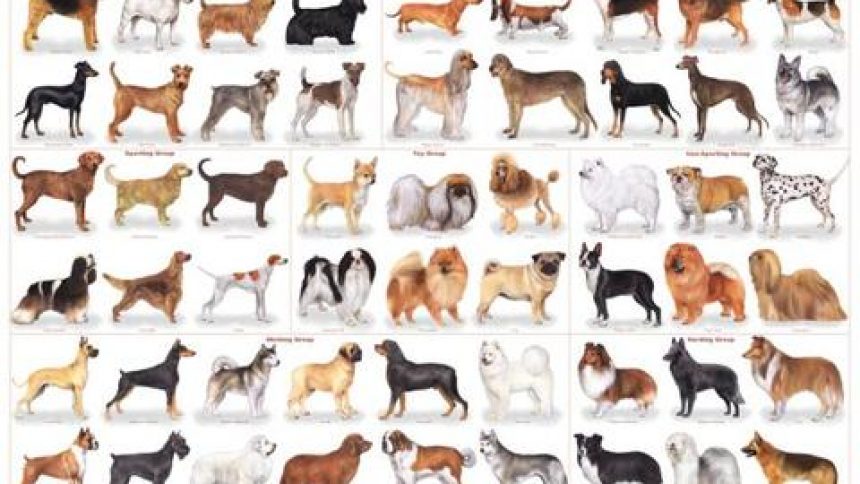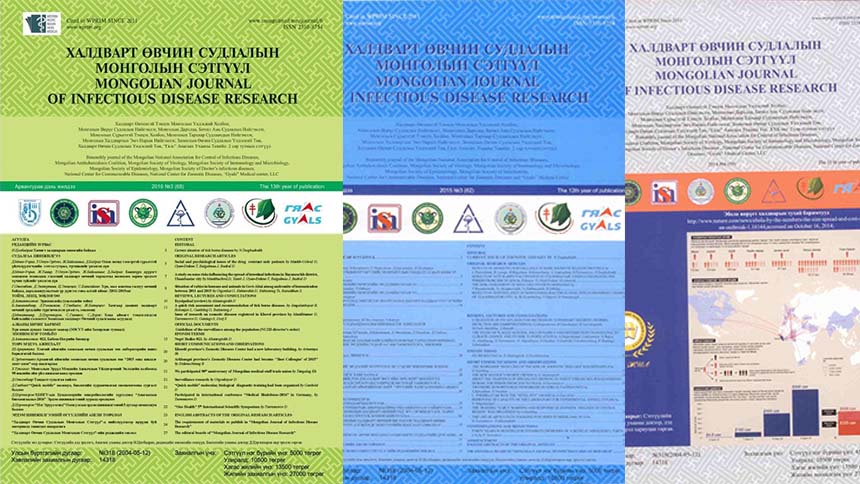The domestic dog (Canis lupus familiaris when considered a subspecies of the gray wolf or Canis familiaris when considered a distinct species) is a member of the genus Canis (canines), which forms part of the wolf-like canids, and is the most widely abundant terrestrial carnivore. The dog and the extant gray wolf are sister taxa as modern wolves are not closely related to the wolves that were first domesticated, which implies that the direct ancestor of the dog is extinct. The dog was the first species to be domesticated and has been selectively bred over millennia for various behaviors, sensory capabilities, and physical attributes.
Their long association with humans has led dogs to be uniquely attuned to human behavior and they are able to thrive on a starch-rich diet that would be inadequate for other canid species. New research seems to show that dogs have mutations to equivalent genetic regions in humans where changes are known to trigger high sociability and somewhat reduced intelligence. Dogs vary widely in shape, size and colors. Dogs perform many roles for people, such as hunting, herding, pulling loads, protection, assisting police and military, companionship and, more recently, aiding handicapped individuals and therapeutic roles. This influence on human society has given them the sobriquet “man’s best friend”.
Origin
The origin of the domestic dog is not clear. It is known that the dog was the first domesticated species. The domestic dog is a member of the genus Canis (canines), which forms part of the wolf-like canids, and is the most widely abundant terrestrial carnivore. The closest living relative of the dog is the gray wolf and there is no evidence of any other canine contributing to its genetic lineage. The dog and the extant gray wolf form two sister clades, with modern wolves not closely related to the wolves that were first domesticated. The archaeological record shows the first undisputed dog remains buried beside humans 14,700 years ago, with disputed remains occurring 36,000 years ago. These dates imply that the earliest dogs arose in the time of human hunter-gatherers and not agriculturists.
Where the genetic divergence of dog and wolf took place remains controversial, with the most plausible proposals spanning Western Europe, Central Asia, and East Asia. This has been made more complicated by the most recent proposal that fits the available evidence, which is that an initial wolf population split into East and West Eurasian wolves, these were then domesticated independently before going extinct into two distinct dog populations between 14,000-6,400 years ago, and then the Western Eurasian dog population was partially and gradually replaced by East Asian dogs that were brought by humans at least 6,400 years ago.
Biology
Anatomy
Domestic dogs have been selectively bred for millennia for various behaviors, sensory capabilities, and physical attributes. Modern dog breeds show more variation in size, appearance, and behavior than any other domestic animal. Dogs are predators and scavengers, and like many other predatory mammals, the dog has powerful muscles, fused wrist bones, a cardiovascular system that supports both sprinting and endurance, and teeth for catching and tearing.
Size and weight
Dogs are highly variable in height and weight. The smallest known adult dog was a Yorkshire Terrier, that stood only 6.3 cm (2.5 in) at the shoulder, 9.5 cm (3.7 in) in length along the head-and-body, and weighed only 113 grams (4.0 oz). The largest known dog was an English Mastiff which weighed 155.6 kg (343 lb) and was 250 cm (98 in) from the snout to the tail. The tallest dog is a Great Dane that stands 106.7 cm (42.0 in) at the shoulder.
Senses
The dog’s senses include vision, hearing, sense of smell, sense of taste, touch and sensitivity to the earth’s magnetic field. Another study suggested that dogs can see the earth’s magnetic field.
Coat
A Golden Retriever with a golden shade of coat. Shades of coat colors can vary within breeds of dogs. For example, some Golden Retrievers have light, almost cream colored coats, and others may have dark, brownish shades of coat.
The coats of domestic dogs are of two varieties: “double” being common with dogs (as well as wolves) originating from colder climates, made up of a coarse guard hair and a soft down hair, or “single”, with the topcoat only.
Domestic dogs often display the remnants of countershading, a common natural camouflage pattern. A countershaded animal will have dark coloring on its upper surfaces and light coloring below, which reduces its general visibility. Thus, many breeds will have an occasional “blaze”, stripe, or “star” of white fur on their chest or underside.
Regarding coat appearance or health, the coat can be maintained or affected by multiple nutrients present in the diet, see Coat (dog) for more information.
Tail
There are many different shapes for dog tails: straight, straight up, sickle, curled, or cork-screw. As with many canids, one of the primary functions of a dog’s tail is to communicate their emotional state, which can be important in getting along with others. In some hunting dogs, however, the tail is traditionally docked to avoid injuries. In some breeds, such as the Braque du Bourbonnais, puppies can be born with a short tail or no tail at all.
Roles with humans
The dogs’ value to early human hunter-gatherers led to them quickly becoming ubiquitous across world cultures. Dogs perform many roles for people, such as hunting, herding, pulling loads, protection, assisting police and military, companionship, and, more recently, aiding handicapped individuals. This influence on human society has given them the nickname “man’s best friend” in the Western world. In some cultures, however, dogs are also a source of meat.
Early roles
Wolves, and their dog descendants, would have derived significant benefits from living in human camps—more safety, more reliable food, lesser caloric needs, and more chance to breed. They would have benefited from humans’ upright gait that gives them larger range over which to see potential predators and prey, as well as better color vision that, at least by day, gives humans better visual discrimination. Camp dogs would also have benefited from human tool use, as in bringing down larger prey and controlling fire for a range of purposes.
The dogs of Tibet are twice the size of those seen in India, with large heads and hairy bodies. They are powerful animals, and are said to be able to kill a tiger. During the day they are kept chained up, and are let loose at night to guard their masters’ house.
Humans would also have derived enormous benefit from the dogs associated with their camps. For instance, dogs would have improved sanitation by cleaning up food scraps. Dogs may have provided warmth, as referred to in the Australian Aboriginal expression “three dog night” (an exceptionally cold night), and they would have alerted the camp to the presence of predators or strangers, using their acute hearing to provide an early warning.
Anthropologists believe the most significant benefit would have been the use of dogs’ robust sense of smell to assist with the hunt. The relationship between the presence of a dog and success in the hunt is often mentioned as a primary reason for the domestication of the wolf, and a 2004 study of hunter groups with and without a dog gives quantitative support to the hypothesis that the benefits of cooperative hunting was an important factor in wolf domestication.
The cohabitation of dogs and humans would have greatly improved the chances of survival for early human groups, and the domestication of dogs may have been one of the key forces that led to human success.
Emigrants from Siberia that walked across the Bering land bridge into North America may have had dogs in their company, and one writer suggests that the use of sled dogs may have been critical to the success of the waves that entered North America roughly 12,000 years ago, although the earliest archaeological evidence of dog-like canids in North America dates from about 9,400 years ago. Dogs were an important part of life for the Athabascan population in North America, and were their only domesticated animal. Dogs also carried much of the load in the migration of the Apache and Navajo tribes 1,400 years ago. Use of dogs as pack animals in these cultures often persisted after the introduction of the horse to North America.
As pets
It is estimated that three-quarters of the world’s dog population lives in the developing world as feral, village, or community dogs, with pet dogs uncommon.
“The most widespread form of interspecies bonding occurs between humans and dogs” and the keeping of dogs as companions, particularly by elites, has a long history. (As a possible example, at the Natufian culture site of Ain Mallaha in Israel, dated to 12,000 BC, the remains of an elderly human and a four-to-five-month-old puppy were found buried together). However, pet dog populations grew significantly after World War II as suburbanization increased. In the 1950s and 1960s, dogs were kept outside more often than they tend to be today (using the expression “in the doghouse” to describe exclusion from the group signifies the distance between the doghouse and the home) and were still primarily functional, acting as a guard, children’s playmate, or walking companion. From the 1980s, there have been changes in the role of the pet dog, such as the increased role of dogs in the emotional support of their human guardians. People and dogs have become increasingly integrated and implicated in each other’s lives, to the point where pet dogs actively shape the way a family and home are experienced.
There have been two major trends in the changing status of pet dogs. The first has been the ‘commodification’ of the dog, shaping it to conform to human expectations of personality and behaviour. The second has been the broadening of the concept of the family and the home to include dogs-as-dogs within everyday routines and practices.
There are a vast range of commodity forms available to transform a pet dog into an ideal companion. The list of goods, services and places available is enormous: from dog perfumes, couture, furniture and housing, to dog groomers, therapists, trainers and caretakers, dog cafes, spas, parks and beaches, and dog hotels, airlines and cemeteries. While dog training as an organized activity can be traced back to the 18th century, in the last decades of the 20th century it became a high-profile issue as many normal dog behaviors such as barking, jumping up, digging, rolling in dung, fighting, and urine marking (which dogs do to establish territory through scent), became increasingly incompatible with the new role of a pet dog. Dog training books, classes and television programs proliferated as the process of commodifying the pet dog continued.
The majority of contemporary people with dogs describe their pet as part of the family, although some ambivalence about the relationship is evident in the popular reconceptualization of the dog–human family as a pack.[165] A dominance model of dog–human relationships has been promoted by some dog trainers, such as on the television program Dog Whisperer. However it has been disputed that “trying to achieve status” is characteristic of dog–human interactions. Pet dogs play an active role in family life; for example, a study of conversations in dog–human families showed how family members use the dog as a resource, talking to the dog, or talking through the dog, to mediate their interactions with each other.
Increasingly, human family members are engaging in activities centered on the perceived needs and interests of the dog, or in which the dog is an integral partner, such as dog dancing and dog yoga.
According to statistics published by the American Pet Products Manufacturers Association in the National Pet Owner Survey in 2009–2010, it is estimated there are 77.5 million people with pet dogs in the United States. The same survey shows nearly 40% of American households own at least one dog, of which 67% own just one dog, 25% two dogs and nearly 9% more than two dogs. There does not seem to be any gender preference among dogs as pets, as the statistical data reveal an equal number of female and male dog pets. Yet, although several programs are ongoing to promote pet adoption, less than a fifth of the owned dogs come from a shelter.
The latest study using magnetic resonance imaging (MRI) comparing humans and dogs showed that dogs have same response to voices and use the same parts of the brain as humans do. This gives dogs the ability to recognize emotional human sounds, making them friendly social pets to humans.
Work
Dogs have lived and worked with humans in many roles. In addition to dogs’ role as companion animals, dogs have been bred for herding livestock (collies, sheepdogs), hunting (hounds, pointers), and rodent control (terriers). Other types of working dogs include search and rescue dogs, detection dogs trained to detect illicit drugs or chemical weapons; guard dogs; dogs who assist fishermen with the use of nets; and dogs that pull loads. In 1957, the dog Laika became the first animal to be launched into Earth orbit, aboard the Soviets’ Sputnik 2; she died during the flight.
Various kinds of service dogs and assistance dogs, including guide dogs, hearing dogs, mobility assistance dogs, and psychiatric service dogs provide assistance to individuals with disabilities. Some dogs owned by epileptics have been shown to alert their handler when the handler shows signs of an impending seizure, sometimes well in advance of onset, allowing the guardian to seek safety, medication, or medical care.
Sports and shows
People often enter their dogs in competitions such as breed-conformation shows or sports, including racing, sledding and agility competitions.
In conformation shows, also referred to as breed shows, a judge familiar with the specific dog breed evaluates individual purebred dogs for conformity with their established breed type as described in the breed standard. As the breed standard only deals with the externally observable qualities of the dog (such as appearance, movement, and temperament), separately tested qualities (such as ability or health) are not part of the judging in conformation shows.
As food
Dog meat is consumed in some East Asian countries, including Korea, China and Vietnam, a practice that dates back to antiquity. It is estimated that 13–16 million dogs are killed and consumed in Asia every year. Other cultures, such as Polynesia and pre-Columbian Mexico, also consumed dog meat in their history. However, Western, South Asian, African, and Middle Eastern cultures, in general, regard consumption of dog meat as taboo. In some places, however, such as in rural areas of Poland, dog fat is believed to have medicinal properties—being good for the lungs for instance. Dog meat is also consumed in some parts of Switzerland. Proponents of eating dog meat have argued that placing a distinction between livestock and dogs is western hypocrisy, and that there is no difference with eating the meat of different animals.
In Korea, the primary dog breed raised for meat, the nureongi (누렁이), differs from those breeds raised for pets that Koreans may keep in their homes.
The most popular Korean dog dish is gaejang-guk (also called bosintang), a spicy stew meant to balance the body’s heat during the summer months; followers of the custom claim this is done to ensure good health by balancing one’s gi, or vital energy of the body. A 19th century version of gaejang-guk explains that the dish is prepared by boiling dog meat with scallions and chili powder. Variations of the dish contain chicken and bamboo shoots. While the dishes are still popular in Korea with a segment of the population, dog is not as widely consumed as beef, chicken, and pork.
Health risks to humans
In 2005, the WHO reported that 55,000 people died in Asia and Africa from rabies, a disease for which dogs are the most important vector.
Citing a 2008 study, the U.S. Center for Disease Control estimated in 2015 that 4.5 million people in the USA are bitten by dogs each year. A 2015 study estimated that 1.8% of the U.S. population is bitten each year. In the 1980s and 1990s the US averaged 17 fatalities per year, while in the 2000s this has increased to 26. 77% of dog bites are from the pet of family or friends, and 50% of attacks occur on the property of the dog’s legal owner.
A Colorado study found bites in children were less severe than bites in adults. The incidence of dog bites in the US is 12.9 per 10,000 inhabitants, but for boys aged 5 to 9, the incidence rate is 60.7 per 10,000. Moreover, children have a much higher chance to be bitten in the face or neck. Sharp claws with powerful muscles behind them can lacerate flesh in a scratch that can lead to serious infections.
In the UK between 2003 and 2004, there were 5,868 dog attacks on humans, resulting in 5,770 working days lost in sick leave.
In the United States, cats and dogs are a factor in more than 86,000 falls each year. It has been estimated around 2% of dog-related injuries treated in UK hospitals are domestic accidents. The same study found that while dog involvement in road traffic accidents was difficult to quantify, dog-associated road accidents involving injury more commonly involved two-wheeled vehicles.
Toxocara canis (dog roundworm) eggs in dog feces can cause toxocariasis. In the United States, about 10,000 cases of Toxocara infection are reported in humans each year, and almost 14% of the U.S. population is infected. In Great Britain, 24% of soil samples taken from public parks contained T. canis eggs. Untreated toxocariasis can cause retinal damage and decreased vision. Dog feces can also contain hookworms that cause cutaneous larva migrans in humans.
Health benefits for humans
The scientific evidence is mixed as to whether companionship of a dog can enhance human physical health and psychological wellbeing. Studies suggesting that there are benefits to physical health and psychological wellbeing have been criticised for being poorly controlled, and finding that “[t]he health of elderly people is related to their health habits and social supports but not to their ownership of, or attachment to, a companion animal.” Earlier studies have shown that people who keep pet dogs or cats exhibit better mental and physical health than those who do not, making fewer visits to the doctor and being less likely to be on medication than non-guardians.
A 2005 paper states “recent research has failed to support earlier findings that pet ownership is associated with a reduced risk of cardiovascular disease, a reduced use of general practitioner services, or any psychological or physical benefits on health for community dwelling older people. Research has, however, pointed to significantly less absenteeism from school through sickness among children who live with pets.” In one study, new guardians reported a highly significant reduction in minor health problems during the first month following pet acquisition, and this effect was sustained in those with dogs through to the end of the study.
In addition, people with pet dogs took considerably more physical exercise than those with cats and those without pets. The results provide evidence that keeping pets may have positive effects on human health and behaviour, and that for guardians of dogs these effects are relatively long-term. Pet guardianship has also been associated with increased coronary artery disease survival, with human guardians being significantly less likely to die within one year of an acute myocardial infarction than those who did not own dogs.
The health benefits of dogs can result from contact with dogs in general, and not solely from having dogs as pets. For example, when in the presence of a pet dog, people show reductions in cardiovascular, behavioral, and psychological indicators of anxiety. Other health benefits are gained from exposure to immune-stimulating microorganisms, which, according to the hygiene hypothesis, can protect against allergies and autoimmune diseases. The benefits of contact with a dog also include social support, as dogs are able to not only provide companionship and social support themselves, but also to act as facilitators of social interactions between humans. One study indicated that wheelchair users experience more positive social interactions with strangers when they are accompanied by a dog than when they are not. In 2015, a study found that pet owners were significantly more likely to get to know people in their neighborhood than non-pet owners.
The practice of using dogs and other animals as a part of therapy dates back to the late 18th century, when animals were introduced into mental institutions to help socialize patients with mental disorders. Animal-assisted intervention research has shown that animal-assisted therapy with a dog can increase social behaviors, such as smiling and laughing, among people with Alzheimer’s disease. One study demonstrated that children with ADHD and conduct disorders who participated in an education program with dogs and other animals showed increased attendance, increased knowledge and skill objectives, and decreased antisocial and violent behavior compared with those who were not in an animal-assisted program.
















